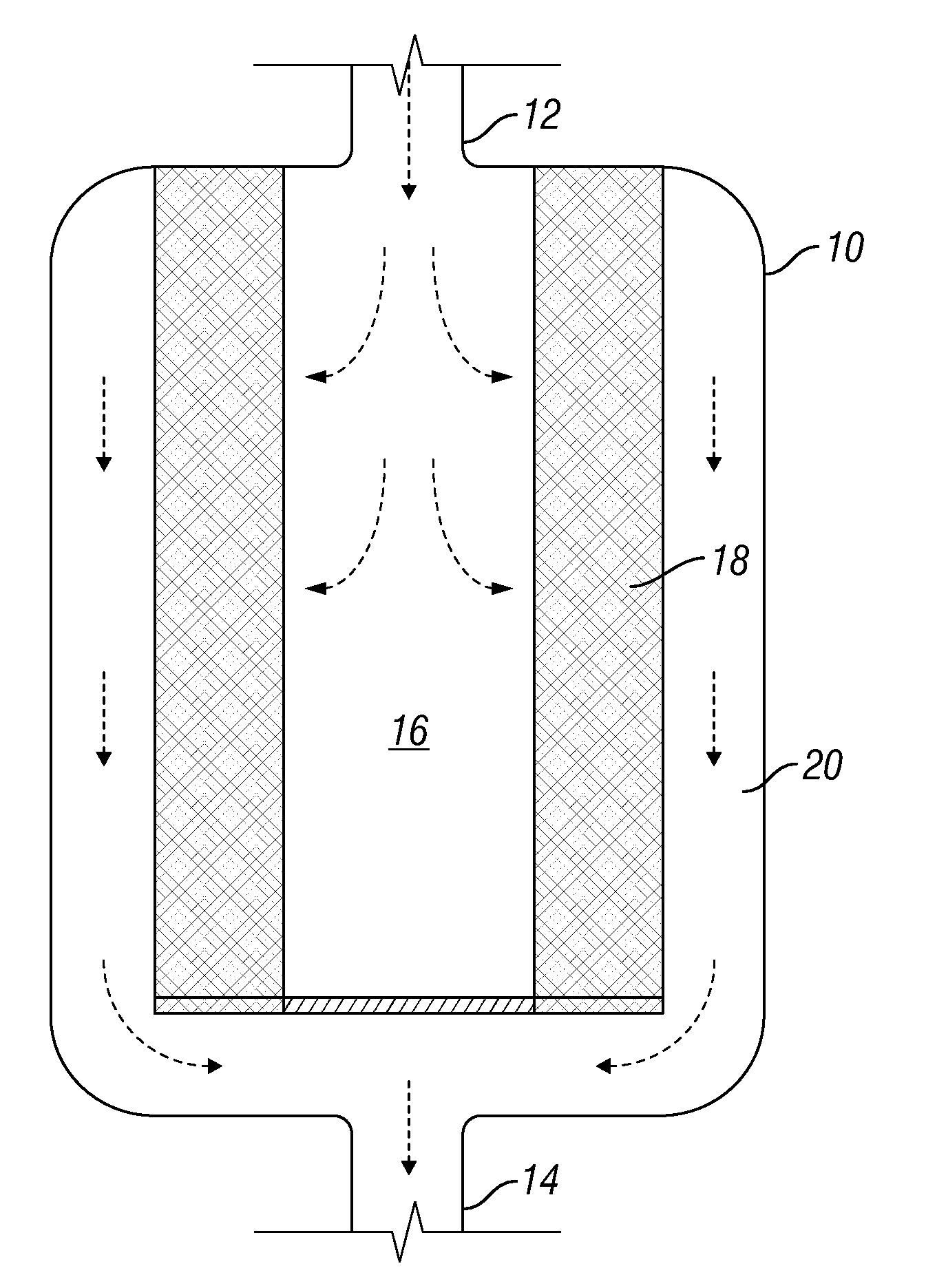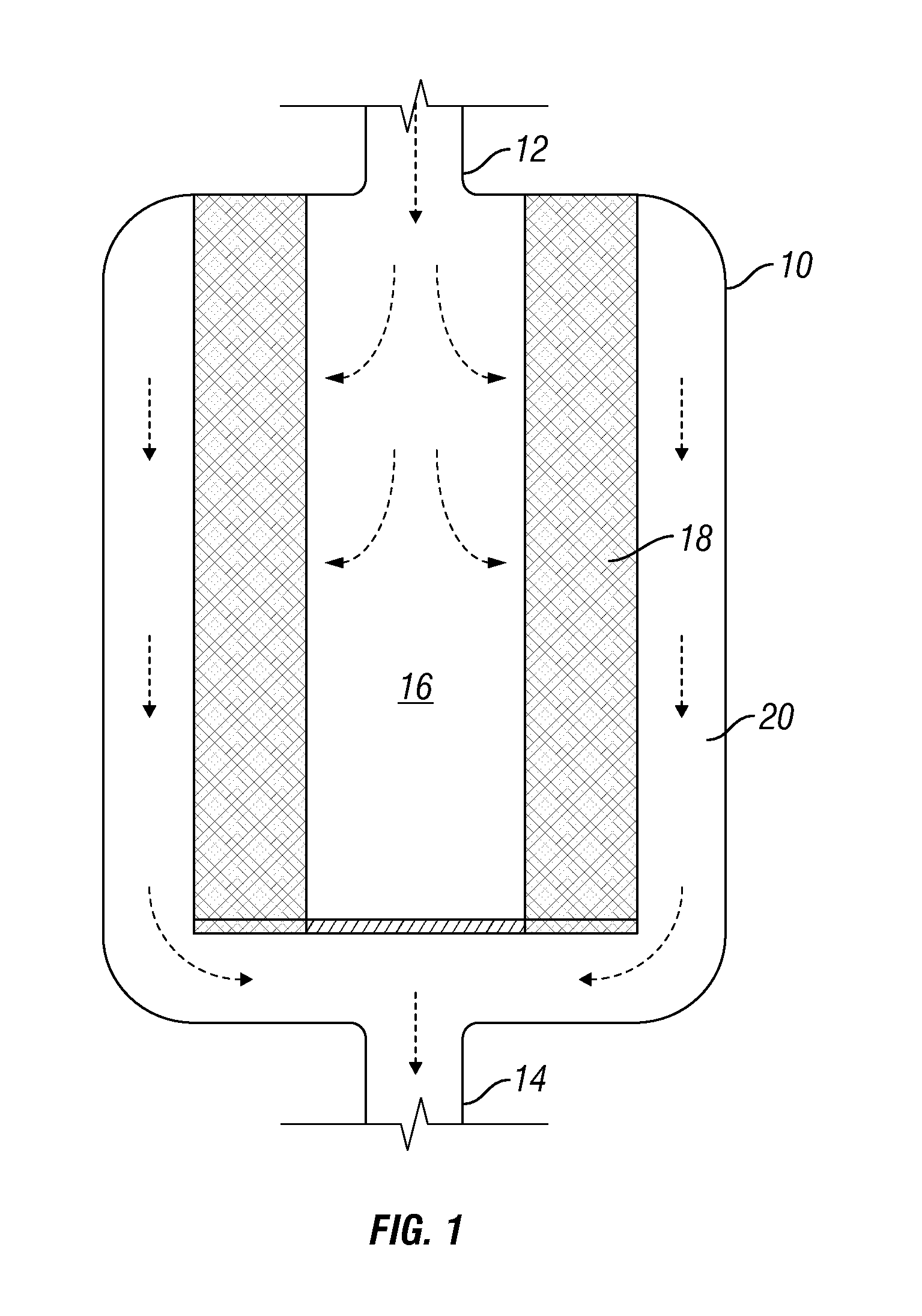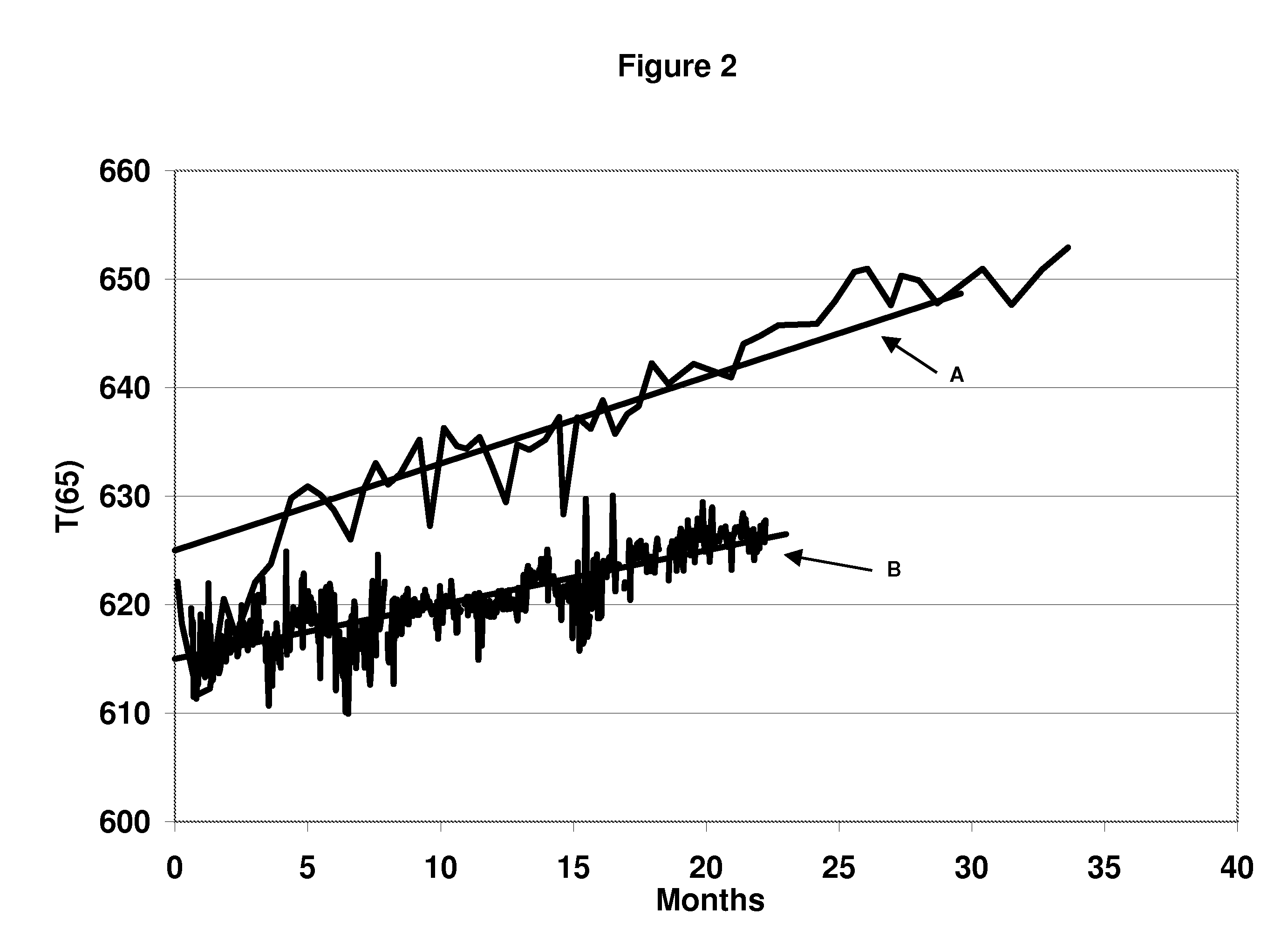Method of improving a dehydrogenation process
a dehydrogenation process and process technology, applied in the direction of organic chemistry, chemistry apparatus and processes, hydrocarbon preparation catalysts, etc., can solve the problems of decreased catalyst bed production and decreased run length, and achieve the effect of improving the dehydrogenation process and reducing the decline ra
- Summary
- Abstract
- Description
- Claims
- Application Information
AI Technical Summary
Benefits of technology
Problems solved by technology
Method used
Image
Examples
example 3
[0069]This example calculates the inlet temperature of the reactor at 3 months and at 24 months to maintain a constant 65% conversion for the reactor of Example 1 wherein the total volume of conventional catalyst is removed and the reactor is 75% filled with the same low decline rate catalyst described in Example 2. That means that the volume of catalyst in this reactor is 75% of the volume of catalyst used in Examples 1 and 2. All process variables besides temperature were the same as in Example 1. The results are shown in Table 1 and show that there is still some remaining catalyst activity at 24 months.
example 4
[0070]This example calculates the inlet temperature of the reactor at 3 months and at 24 months to maintain a constant 65% conversion for the reactor of Example 1 wherein the total volume of conventional catalyst is removed and the reactor is 50% filled with the same low decline rate catalyst described in Example 2. All process variables besides temperature were the same as in Example 1. The results are shown in Table 1 and show that the reactor has reached end of run conditions.
[0071]As can be seen from these examples, it is possible to achieve the same run length of 24 months using a reactor full of conventional catalyst or a reactor 50% full with low decline rate catalyst. Alternatively, the reactors in Examples 2 and 3 could be operated for longer than 24 month run lengths before the inlet temperature reached the maximum of 650° C. The higher inlet temperatures at 3 months for Examples 3 and 4 are required to compensate for higher liquid hourly space velocity.
TABLE 1DeclineCatal...
PUM
| Property | Measurement | Unit |
|---|---|---|
| thickness | aaaaa | aaaaa |
| thickness | aaaaa | aaaaa |
| thickness | aaaaa | aaaaa |
Abstract
Description
Claims
Application Information
 Login to View More
Login to View More - R&D
- Intellectual Property
- Life Sciences
- Materials
- Tech Scout
- Unparalleled Data Quality
- Higher Quality Content
- 60% Fewer Hallucinations
Browse by: Latest US Patents, China's latest patents, Technical Efficacy Thesaurus, Application Domain, Technology Topic, Popular Technical Reports.
© 2025 PatSnap. All rights reserved.Legal|Privacy policy|Modern Slavery Act Transparency Statement|Sitemap|About US| Contact US: help@patsnap.com



